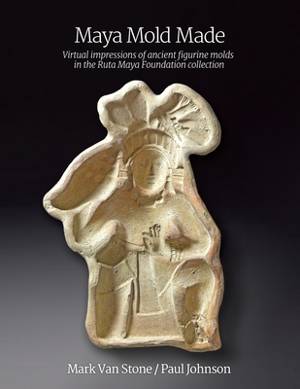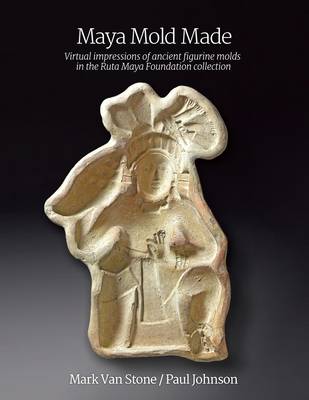
- Afhalen na 1 uur in een winkel met voorraad
- Gratis thuislevering in België
- Ruim aanbod met 7 miljoen producten
- Afhalen na 1 uur in een winkel met voorraad
- Gratis thuislevering in België
- Ruim aanbod met 7 miljoen producten
Maya Mold Made
Virtual impressions of ancient figurine molds in the Ruta Maya Foundation collection
Mark Van Stone, Paul JohnsonOmschrijving
Mass production in ancient Mesoamerica -
Maya Mold Made presents a collection of 208 ancient clay figurine molds from the late Maya Classic period (ca. AD 730-830), once employed in the mass-manufacture of musical figurines for ceremonial use, now in the collection of the Ruta Maya Foundation in Guatemala.
More than a descriptive record of significant rare artifacts, the book exhibits an unexamined chapter of Classic Maya life, and brings it to life with realistic virtual restorations of now-lost mold-made objects in images uniquely created by digital photo-capture of a compelling high-relief optical effect known as the hollow-face or hollow-mask illusion, with no harm done to the molds. The result reveals never-before-seen examples of a popular Maya art that allows us today to feel a direct human connection with the remarkable people that made them more than a millennium ago - small ceramic figures, sometimes called "Jaina" figurines, that depict many aspects of daily life in that ancient time, both royal and mundane.
Archaeological evidence shows they played a role in the ritual practices of all levels of Maya society. How was this demand met and how could such engaging art be made affordable to the common people as well as the royal elite? The molds in this collection provide an answer: economy of scale. They were mass-produced, manufactured in vast numbers.
In 448 pages richly illustrated with over 800 color photos and illustrations, the book describes the development, technology, and societal role of the ancient Maya's figurine industry. The iconographic analysis of objects in its catalog core is supported further in appendices of supplementary text and photo references. It is one of only a few books in ancient popular Maya art and its industrial production
Created for all enthusiasts of Maya art and culture, from students to scholars.
Specificaties
Betrokkenen
- Auteur(s):
- Uitgeverij:
Inhoud
- Aantal bladzijden:
- 448
- Taal:
- Engels
Eigenschappen
- Productcode (EAN):
- 9780982682630
- Verschijningsdatum:
- 30/04/2022
- Uitvoering:
- Paperback
- Formaat:
- Trade paperback (VS)
- Afmetingen:
- 216 mm x 279 mm
- Gewicht:
- 1428 g

Alleen bij Standaard Boekhandel
Beoordelingen
We publiceren alleen reviews die voldoen aan de voorwaarden voor reviews. Bekijk onze voorwaarden voor reviews.












